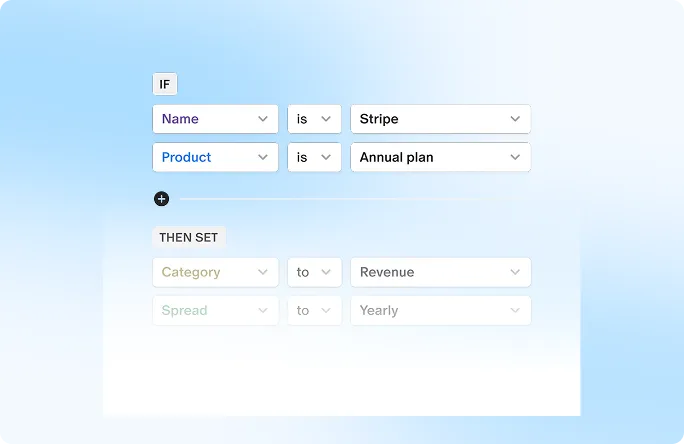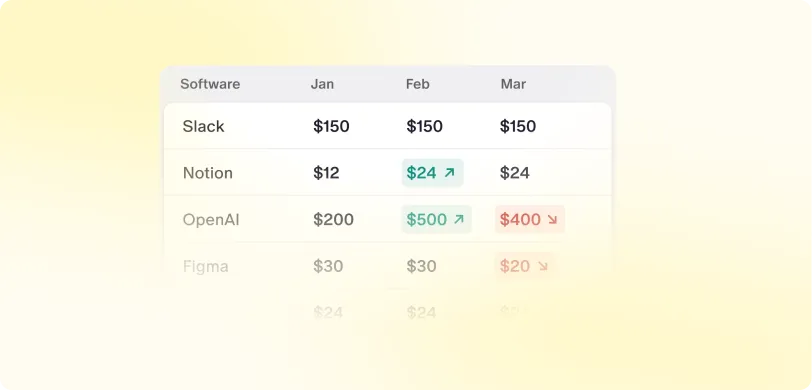Lifecycle of your ESOPs
Last week we explored why companies offer employee equity to their employees. Let's now understand the key dates and milestones associated with receiving equity as an employee. This week's article will go through the entire ESOP lifecycle from start to finish to prepare you for what can be a long-term commitment that could last even over a decade.
Note: This guide is prepared as introduction to a complex topic of equity compensation. Calculations and examples shown throughout this guide are simplified and illustrative to represent the life of a general Employee Share Ownership Plan (ESOP) award.
And hey, congrats - your employer just offered you an equity award worth $1,000! Time to cash out and go shopping? Not so fast. So, what can you expect to happen next?
1. Grant/Allocation
Companies don't generally decide a specific number of equity instruments to be allocated to you. Instead, you are allocated certain value of equity. In our example your equity award is worth $1,000. Next, company normally uses current share price on the grant date to determine the quantity you receive. If the current share price on the day you receive your award is $10, you will receive $1,000 / $10 = 100 ESOPs. Keep in mind that, companies may use method other than the current share price to determine your grant quantity.
Important: you need to understand which price will be used to determine your allocation quantity. If you accept a job offer in January that includes a sign-on equity award to join Series A company in March, your equity will be granted in March. Should company raise Series B in February and double their valuation, the new higher share price will most likely be used to determine your grant quantity - i.e. value of your award upon joining will still be $1,000, you will only be granted 50 ESOPs.
2. Grant Acceptance
Once you are allocated your ESOPs, you can expect to receive several documents that you will be asked to review and accept:
- Offer letter outlining conditions of your award
- Plan rules
- Possibly other supporting documentation to help you understand the terms and conditions attached to your grant (e.g. FAQs, Tax Summary, Trust Deed)
It's in your best interest to read these documents to understand the rules that are attached to your award. These rules are set upfront and don't change after you accept them (in some cases the rules may change if tax legislation changes in your jurisdiction). Don't worry - one of ESOP Academy's upcoming articles will give you a list of all the key words, phrases and clauses you should look out for when reviewing plan documentation. Keep in mind, that companies often set a deadline for you to accept their equity offer. This period can range from a couple of days to a few weeks.
Note: Acceptance and allocation process may work in different ways:
a) Grant Acceptance (most common): as described above, you receive a grant that you need to accept
b) Opt-in offer: you need to accept the equity offer first, and only after you've done so, you are allocated your ESOPs
c) Opt-out: you receive your ESOPs and it's automatically accepted by you, and no action is required from you (you have an option to decline/reject it)
3. Vesting Period
Documents reviewed and grant accepted? Congrats. Excited to sell your ESOPs and cash in? You might need to wait a little whilte. I would like to introduce you to terms 'vesting' and 'service condition'. Just because you received a grant, equity is not really yours just yet. You need to earn it over a period of time. This period of time is called a vesting period (and at times can be referred to as restriction period or deferral period). During this timeframe, you are at risk of losing your ESOPs due to certain conditions. For instance, only at the end of the vesting period, you meet the service condition (aka stayed employed for the required period of time) and earn your equity. Sometimes staying employed is not enough for ESOPs to vest, and some additional performance conditions also need to be met - we will talk them about later.
What's the point of this? Remember motivation and retention we discussed in the introduction? Well, the company wants to incentivise you to perform and help them out for a little bit before you get the reward. As a result, you have an incentive to stay with the company longer and help it succeed. And in return, the value of your ESOPs hopefully goes up, and you benefit yourself in return.
Vesting Schedule Example
25% of your ESOPs vest after 1 year, and the remaining 75% over the remaining 3 years in equal amounts each month. 4 years after you receive the ESOPs, all of them have vested - you've earned them.
Note: your vesting schedule can vary drastically - you may not have monthly vestings, or even have 100% vest on a single vesting date after X number of years. There could also be additional restriction period after the vesting date during which you can't transact.
How do you know what your vesting schedule is and if there are any additional restrictions? You can probably guess the answer - it's in the grant documentation you received at the very beginning. Read the documents carefully.
4. Performance Conditions and Vesting Date
To keep it simple, for the rest of this guide we will assume that your ESOP award vests in full in one go 3 years after the grant date. Fast forward to the vesting date - have you finally earned your ESOPs? Maybe… Besides the service condition (i.e. staying employed with the company for the specified period of time), your vesting schedule may also have additional conditions often called performance conditions or performance rules.
If that's the case, your awards don't automatically vest on the vesting date. Not only you need to stay employed for the duration of the vesting period, but there is also an additional condition (or a couple) that must be met for the awards to vest. These could be linked to either your individual performance, company's overall performance, or a milestone. The idea here from company's perspective is to incentivise you to help the organisation achieve its goals and for you to get rewarded for your contribution. The conditions are set upfront and are measured at the end of the vesting period. If the conditions are met, awards are yours, if not, you will lose out on all or some of them.
Note: how do you find out if your award has additional performance conditions? How do you know what they are, how they are measured, and how much will you receive on vesting if the condition is not or only partially met? You guessed it - read the plan documents you received. It's all in there.
5. Leaving the company
What happens if you leave the company before your ESOPs get to the vesting date? Will you miss out on the equity? It depends. As a rule of thumb, if you decide to leave (i.e. you resign), you will likely get to keep your equity that vested before your last day, but will forfeit the remaining unvested equity. This is referred to being a 'bad leaver' (don't take it personally - it's just a terrible term that's used - and it doesn't mean you were bad at your job). If you cease your employment with the company for reasons outside of your control (e.g. due to a redundancy, retirement after a certain age, medical reasons or death), you are generally classified as a 'good leaver', and you may be entitled to keep some or all of your unvested equity in addition to what has already vested.
And please think twice before resigning with your last day with the company being a couple of days before the vesting date - you may end up forfeiting all your ESOPs after waiting for all those years. I've seen it happen way too many times. If you end up doing that - consider negotiating a sign-on award with your new employer to compensate you for the ESOPs you are missing out on by leaving.
Note: Sounding a bit repetitive here, but your plan documentation will explain exactly what will happen when you leave for various reasons (resignation, redundancy etc.). The rules vary around bad and good leaver provisions from company to company, including minimum length of time you need to be employed to be classified as a good leaver.
6. Post Vesting
Alright, we got to the vesting and all conditions were met. ESOPs are yours. What happens now? ESOPs are now yours to transact on. To keep it simple, your options are:
- Sell and get cash
- Hold on to your shares
- Do nothing (be sure to read section 7)
Your ability to transact will depend on several factors:
- Your company's securities trading policy - always check if you are in a trading blackout period or if you need to request pre-clearance first before entering a transaction;
- Whether you hold shares - if you have options or rights, you will need to convert them into shares first (more on various equity instruments next week); and
- Whether you company is listed on an exchange or is still private (i.e. unlisted) - things are easier for listed companies as you will likely be able to easily transact at any time (subject to the securities trading policy). If your company is private, there is no active market where you can sell your shares, so you may need to wait for a certain window or a liquidity event to sell and receive cash.
Note: there are a lot of things to consider here - have a chat with your employer to get guidance on your ability to transact post vesting and what options (no pun intended) are available to you.
7. Expiry
You need to be mindful of the expiry date of your ESOPs. Depending on the equity instrument you are receiving (options being one of the most common ones for early-stage startups), you may not be holding actual shares, and you need first convert your options or another instrument used for your ESOPs into shares. As you can imagine, if you don't do complete this step before the expiry date, you are at risk at losing them even though they are vested.
The expiry period various greatly and can be as long as 15 years (but can also be a lot shorter) from grant date in Australia. Other jurisdictions also impose their own limits on the length of expiry periods.
In addition to that, even if your award's original vesting date is, say, 10 years from grant, if you leave the company, the expiry date may be changed. Common approach for startups is for companies to accelerate your expiry date if you leave and give you 90 days after your last day to transact on your ESOPs before they expire and you lose them. Don't get caught by surprise thinking you have years to take action. You should stay on top of your ESOP rules.
Note: as you can see - it is important to know these key dates, so you don't end up losing out on your ESOPs even after earning them over the vesting period. Always check the plan documentation to understand the key dates, including expiry.
What's next?
Hopefully by now you have a better idea what you are signing up for when you receive an offer of ESOPs and what you can expect to happen immediately after the offer and years down the road. Knowing the key milestones in the lifecycle is important, but as you might have noticed, it is also crucial to know what equity instrument you actually hold as part of your ESOP award. Do you need to take action to receive shares or you hold them from day one? Coming up next is an overview of the most common equity instruments you can expect to come across and explanation of the key differences between them.
Next week: ESOP Academy #3: Equity Instruments
Stay tuned: ESOP Academy #4: ESOPs sound great! What's the catch?


 Equity management
Equity management

 Fund management
Fund management

 Fund management
Fund management

 Fund management
Fund management













































